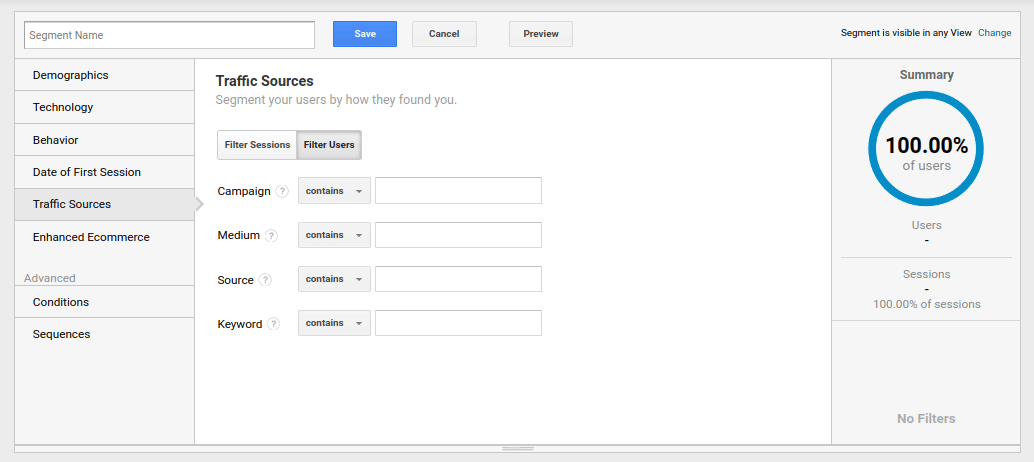Harnessing Remarketing in Google Analytics: A Comprehensive Guide
Harnessing remarketing in Google Analytics provides companies a critical edge in reaching out to potential clients. This overview will drop light on the crucial actions involved in utilizing the full capacity of remarketing in Google Analytics, leading to enhanced marketing end results.
Recognizing Remarketing in Google Analytics
Remarketing in Google Analytics enables organizations to purposefully target customers that have actually formerly interacted with their web site or mobile app. By leveraging data from Google Analytics, services can develop tailored remarketing checklists based on individual habits, such as pages checked out, actions taken, or details goals attained. This effective device makes it possible for companies to re-engage with users that have actually revealed passion in their products or services, ultimately boosting the probability of conversion.
Recognizing the different sorts of remarketing approaches is important for an effective campaign - What Is “Remarketing” In Google Analytics?. Google Analytics offers numerous alternatives, consisting of common remarketing, dynamic remarketing, and remarketing checklists for search advertisements (RLSA) Each type serves an one-of-a-kind function and can be tailored to satisfy specific advertising and marketing objectives
Moreover, evaluating the performance of remarketing campaigns is vital for enhancing results. Google Analytics supplies beneficial insights into the effectiveness of various remarketing strategies, enabling services to make data-driven decisions and improve their targeting strategy. By constantly changing and keeping an eye on remarketing initiatives based on analytics information, businesses can optimize ROI and drive success in their advertising and marketing efforts.
Establishing Remarketing Projects

After establishing target market lists, the next step is to link Google Analytics with Google Advertisements. By linking these two systems, businesses can flawlessly transfer audience listings from Google Analytics to Google Advertisements for remarketing purposes. This combination allows for more accurate targeting and better project efficiency.
When the accounts are linked, services can produce remarketing campaigns in Google Ads making use of the audience lists formerly specified in Google Analytics. These projects can be personalized with details advertisement creatives, messaging, and bidding techniques to efficiently re-engage with past visitors and drive conversions. By adhering to these actions, businesses can leverage the power of remarketing to improve their advertising and marketing efforts and raise ROI.
Utilizing Audience Segmentation Methods

Predefined sectors in Google Analytics allow you to swiftly assess common audience categories like brand-new customers, returning users, or customers that finished a particular goal on your site. Custom-made segments, on the various other hand, allow you view website to produce distinct sections based upon specific requirements that are essential to your service purposes. Dynamic remarketing checklists instantly change based upon individual habits, revealing tailored ads to users that have interacted with your site specifically means.
Studying Remarketing Performance Metrics
Upon assessing the performance of remarketing projects in Google Analytics, the analysis of crucial performance metrics offers beneficial insights right into audience engagement and conversion rates. By delving into metrics such as click-through prices (CTR), conversion prices, cost per procurement (CPA), and return on ad invest (ROAS), marketing experts can determine the success of their remarketing efforts. Analyzing these metrics allows online marketers to optimize campaigns, improve audience targeting, and designate budget plans efficiently to enhance general remarketing performance.
Enhancing Remarketing Techniques
When refining remarketing methods in Google Analytics, concentrating on audience division is vital for accomplishing project success. By splitting your audience right into particular segments based upon their have a peek at this website habits, demographics, or rate of interests, you can customize your ads better to each group. This targeted method boosts the possibility of involving users that have actually currently shown interest in your services or items, resulting in greater conversion prices.
Another important aspect of optimizing remarketing techniques is continually screening and refining your campaigns (What Is “Remarketing” In Google Analytics?). A/B screening different ad creatives, messaging, or deals can assist you identify what reverberates finest with your audience and drives one of the most conversions. By analyzing the performance of these examinations in Google Analytics, you can make data-driven decisions to optimize your remarketing efforts better
Additionally, leveraging dynamic remarketing can dramatically enhance your campaign results. This feature enables you to reveal individualized advertisements to individuals based upon their previous communications with your website, showcasing services or products they have formerly watched. By delivering tailored content to users based on their passions and actions, dynamic remarketing can aid raise interaction and drive conversions.
Verdict
To conclude, utilizing remarketing in Google Analytics is a calculated approach to target customers that have previously involved with an internet site. By developing personalized audience lists and using audience division strategies, organizations can enhance remarketing advocate boosted conversion prices. Evaluating efficiency metrics and this content continuously maximizing techniques are crucial for making the most of the effectiveness of remarketing initiatives.
Google Analytics offers various alternatives, including typical remarketing, vibrant remarketing, and remarketing lists for search ads (RLSA)After setting up target market lists, the next step is to connect Google Analytics with Google Ads. By linking these 2 platforms, services can perfectly move target market listings from Google Analytics to Google Ads for remarketing purposes.When the accounts are connected, companies can develop remarketing projects in Google Ads using the target market details previously defined in Google Analytics.When refining remarketing approaches in Google Analytics, focusing on audience division is extremely important for accomplishing project success.